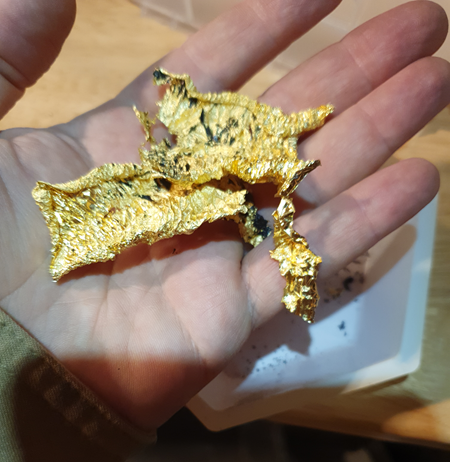Breakfast cereal RECALLED over metal fragments found in the products
06/30/2025 / By Olivia Cook

- Post Consumer Brands recalled over 5,300 boxes of Honey Bunches of Oats with Almonds due to sharp metal fragments. The FDA classified it as a Class II recall (risk of temporary harm). Affected boxes were shipped to Sam’s Club in California and Colorado.
- The cereal recall is part of a broader trend. Examples include metal in crackers (April 2025), wood in Nestlé frozen meals (March 2025), metal in Chomps snack sticks (March 2025), and metal in cheese, hot sauce and canned green beans (January to February 2025).
- Contamination often stems from worn equipment (blades, bolts), human error, or failed detection systems in high-speed factories. Even advanced protocols like metal detectors aren’t foolproof.
- Foreign objects pose injury risks (choking, cuts) and erode trust in food safety. Stronger oversight and transparent communication is expected from manufacturers in light of these recalls.
- Consumers can protect themselves by monitoring FDA recall alerts; inspecting packaging for damage or odd smells; saving packaging/UPC codes for reporting issues; reporting problems via FDA’s site; and educating family to spot unusual textures/tastes in food.
A popular breakfast cereal has been recalled after metal fragments that could injure children were found in the product.
In late May, Post Consumer Brands quietly issued a recall notice for more than 5,300 boxes of its Honey Bunches of Oats with Almonds. The recall stemmed from sharp metal fragments that could be hiding in the cereal.
On June 12, the Food and Drug Administration (FDA) made the recall official. It classified the situation as a Class II recall – meaning it poses a risk of temporary or medically treatable harm.
The boxes in question were shipped to Sam’s Club stores in California and Colorado. Consumers are urged to check for cereal boxes with UPC code 8 84912-01428 3 and “best if used by” dates of April 9 or 10, 2026.
While no injuries linked to the recalled breakfast cereal have been reported, this isn’t an isolated case. Here’s a closer look at some recent examples:
- April 2025: Shearer’s Foods Oyster Crackers, including store brands – Bulk, Giant Eagle, Great Value, Market Pantry and VISTA – were pulled from shelves after batches were found to contain stainless steel wire fragments. Over 18,000 cases were recalled in 24 states, with the affected products sold at major retailers like Giant Eagle, Target and Walmart.
- March 2025: Nestle USA issued a voluntary recall of several frozen meals, including Lean Cuisine’s Butternut Squash Ravioli, Spinach Artichoke Ravioli, Lemon Garlic Shrimp Stir-Fry and Stouffer’s Party Size Chicken Lasagna, after consumers reporting finding wood fragments. Reportedly, one person even choked on a piece.
- March 2025: Chomps – a snack brand popular on Tik Tok – recalled nearly 30,000 pounds of their Original Beef Stick (mild) and Original Turkey Sticks (mild) after consumers found metal fragments in the vacuum-sealed snacks. The affected products were produced between Jan. 13 and 15, 2025 and sold in California and Illinois.
- February 2025: Great Lakes Cheese Co. recalled nearly 5,000 pouches of Happy Farms’ Colby Jack Deli-Sliced Cheese after detecting stainless steel fragments in some packages. They were sold at Albi locations in Connecticut, Michigan, Ohio and Pennsylvania.
- February 2025: The viral Hot Ones brand recalled more than 50,000 bottles of its Los Calientes Hot Sauce when testing revealed metal and plastic contamination. The recall shook fans who expected higher standards from a gourmet-style product line.
- January 2025: Over 200,000 cans of Target’s Good & Gather Cut Green Beans were recalled due to the presence of metal pieces inside. These were produced by California-based Del Monte Foods, Inc. and sold in 21 states.
These examples make one thing crystal clear. Metal contamination is not a one-brand, one-category problem. It is a systemic issue affecting everything from frozen meals and snacks to sauces and vegetables.
Whether it is sharp steel wire, metal, wood or some other “foreign object,” these contaminants highlight critical weaknesses in food manufacturing safety systems and a growing need for both stronger oversight and more transparent communication with the public.
How do foreign objects end up in food?
From metal shards to wood fragments and even glass and plastic bits, foreign objects in food aren’t as rare as most people would hope. And while each case may seem like a fluke, the causes are often rooted in the everyday mechanics of food production.
Inside food manufacturing plants, high-speed machines handle massive volumes – peeling, slicing, mixing, packing, sealing and packaging products at a rapid pace. Over time, the components of these equipment (e.g., blades, bolts, filters, screws, etc.) can wear down, crack or break off.
If detectors miss these fragments or if regular inspection and maintenance is overlooked, they can easily make their way into the food Americans bring home. A small piece of metal, plastic or wood from machinery might be all it takes to contaminate thousands of units before the issue is caught.
Sometimes, the problem stems from human error. A faulty repair, a misaligned filter or damaged packaging equipment could introduce fragments during cutting or sealing. In other cases, detection systems may fail due to calibration issues or simple oversight.
While most food production lines use metal detectors, X-ray scanners and other safety protocols, none are foolproof. And in an industry where speed and volume are prioritized, even a momentary lapse can lead to contamination.
What makes these incidents so alarming isn’t just the injury risk. It is the betrayal of trust. But here are a few practical tips to reduce risk:
- Check the FDA website regularly for food recalls and safety alerts or sign up for alerts to monitor what is happening.
- Inspect packaging. Dents, rips or odd smells can be red flags.
- Save packaging until use. If something goes wrong, having a lot number or UPC helps.
- Report problems: Use the FDA’s reporting site if a food item contains a foreign object or if it causes illness.
- Talk to other family members. If something tastes bad or feels “off” in their food, teach them to bring it up immediately.
Visit CleanFoodWatch.com for more similar stories.
Watch this video about why food recalls are on the rise in the United States.
This video is from the Daily Videos channel on Brighteon.com.
More related stories:
Wheaties cereal found to contain so many metal fragments that they can be levitated with magnets.
Canned beef stew RECALLED nationwide over wood fragments.
Avoid toxic contaminants like microplastics in salt by switching to Pink Himalayan Salt.
Sources include:
Submit a correction >>
Tagged Under:
big government, breakfast cereal, Class II recall, clean food watch, contaminants, dangerous, Food and Drug Administration, food processing, food safety, foreign objects, Honey Bunches of Oats with Almonds, metal fragments, metal shards, post, Product recall, products
This article may contain statements that reflect the opinion of the author
RECENT NEWS & ARTICLES
COPYRIGHT © 2017 METALS NEWS



















